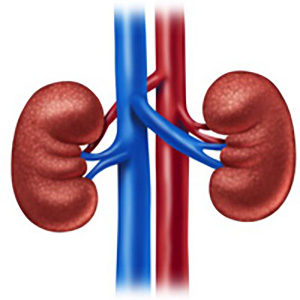Brucella epididymo-orchitis: A single-center experience with a review of the literature

All claims expressed in this article are solely those of the authors and do not necessarily represent those of their affiliated organizations, or those of the publisher, the editors and the reviewers. Any product that may be evaluated in this article or claim that may be made by its manufacturer is not guaranteed or endorsed by the publisher.
Brucella epididymo-orchitis (BEO) is a rare complication of brucellosis. Despite the high incidence of brucellosis in developing countries, few case series on BEO are available. This study focuses on the clinical presentations, diagnosis, and treatment of BEO with a review of the literature. This study included consecutive BEO patients diagnosed and treated at Smart Health Tower between 2021 and 2023. The required data were retrospectively collected from patients' profiles. The BEO diagnosis was established through scrotal Doppler ultrasound in cases with a positive Rose Bengal test and positive IgG and IgM results for brucellosis, in addition to scrotal pain and swelling. This study included 11 cases whose ages ranged from 22 to 55 years. Most of the cases presented with testicular pain (72.7%), followed by fever (63.6%) and arthralgia (63.6%). The right side (54.5%) was slightly more affected than the left side (45.5%). The major abnormal laboratory finding was an elevated C-reactive protein (82%). The treatment was conservative, in which a combination of gentamicin, doxycycline, and rifampicin was administered to the patients for about 6-8 weeks. One case underwent an orchiectomy due to the abscess formation. All the patients responded well to the treatment, with no recurrence. In the Middle East, brucellosis remains a concerning infectious disease. Early diagnosis, aimed at preventing abscess formation and other complications, takes first priority to avoid invasive interventions.
Bapir R, Ahmed SF, Tahir SH, Salih AM, Kakamad FH, Ahmed GS, et al. Brucella orchitis presenting as a testicular mass mimicking a testicular tumor: a rare case report. African Journal of Urology. 2023;29(1):5. DOI: https://doi.org/10.1186/s12301-023-00334-w
Nahas RS, Alsulami A, Lashkar MO, Thabit AK. Brucella epidydimo-orchitis successfully treated with dual oral drug regimen: A case report with differential diagnoses of malignancy and tuberculosis. Radiology Case Reports. 2022;17(10):3485-9. DOI: https://doi.org/10.1016/j.radcr.2022.07.012
Celen MK, Ulug M, Ayaz C, Geyik MF, Hosoglu S. Brucellar epididymo-orchitis in southeastern part of Turkey: an 8 year experience. The Brazilian Journal of Infectious Diseases. 2010;14(1):109-15. DOI: https://doi.org/10.1016/S1413-8670(10)70021-0
Aydemir H, Budak G, Budak S, Celik O, Yalbuzdag O, Keles I. Different presentation types of primary Brucella epididimo-orchitis. Archivio Italiano di Urologia e Andrologia. 2015;87(2):151-3. DOI: https://doi.org/10.4081/aiua.2015.2.151
Khodadadi J, Dodangeh M, Nasiri M. Brucellar epididymo-orchitis: Symptoms, diagnosis, treatment and follow-up of 50 patients in Iran. IDCases. 2023;32:e01736. DOI: https://doi.org/10.1016/j.idcr.2023.e01736
Zana H. Mahmood, Fenk M. Mohemed, Binaiy N. Fatih, Abdullah A. Qadirm Shalaw H. Abdalla, Cancer publications in one year (2022); a cross-sectional study. Barw Medical Journal. 2023; 1(2): doi: 10.58742/bmj.v1i2.30. DOI: https://doi.org/10.58742/bmj.v1i2.30
Tanyel E, Tasdelen-Fisgin N, Sarikaya-Genc H, Doganci L, Tulek N. Brucella epididymo-orchitis relapsing three times despite treatment. International Journal of Infectious Diseases. 2008;12(2):215-7. DOI: https://doi.org/10.1016/j.ijid.2007.04.016
Alarbid A, Salem SM, Alenezi T, Alenezzi A, Alali K, Ajrawi F, et al. Early predictors of Brucella epididymo-orchitis. Urology Annals. 2023;15(2):158-61. DOI: https://doi.org/10.4103/ua.ua_178_21
Gozdas HT, Bal T. Brucellar epididymo-orchitis: a retrospective study of 25 cases. The Aging Male. 2019;23(1):29-32. DOI: https://doi.org/10.1080/13685538.2019.1573892
Savasci U, Zor M, Karakas A, Aydin E, Kocaaslan R, Oren NC, et al. Brucellar epididymo-orchitis: a retrospective multicenter study of 28 cases and review of the literature. Travel medicine and infectious disease. 2014;12(6):667-72. DOI: https://doi.org/10.1016/j.tmaid.2014.10.005
Kadikoylu G, Tuncer G, Bolaman Z, Sina M. Brucellar Orchitis in Innerwest Anatolia Region of Turkey: a report of 12 cases. Urologia internationalis. 2002;69(1):33-5. DOI: https://doi.org/10.1159/000064357
Memish ZA, Venkatesh S. Brucellar epididymo‐orchitis in Saudi Arabia: a retrospective study of 26 cases and review of the literature. BJU international. 2001;88(1):72-6. DOI: https://doi.org/10.1046/j.1464-410x.2001.02243.x
Hasanjani Roushan MR, Baiani M, Javanian M, Kasaeian AA. Brucellar epididymo-orchitis: Review of 53 cases in Babol, northern Iran. Scandinavian journal of infectious diseases. 2009;41(6-7):440-4. DOI: https://doi.org/10.1080/00365540902968043
Aso S. Muhialdeen, Jaafar Omer Ahmed, Hiwa O. Baba, Ismael Y. Abdullah, Hemn Ali Hassan, Kayhan A. Najar, et al. Kscien’s List; A New Strategy to Discourage Predatory Journals and Publishers (Second Version). Barw Medical Journal. 2023; 1(1):1-3. DOI: https://doi.org/10.58742/bmj.v1i1.14
Naz H, Korkmaz P, Cevik F, Aykin N. The clinical and laboratory characteristics, treatments, and outcomes of patients with Brucella epididymo-orchitis (BEO) compared to those without BEO. Turkish Journal of Medical Sciences. 2016;46(5):1323-8. DOI: https://doi.org/10.3906/sag-1406-29
Gonen I, Umul M, Sozen H, Kaya O. Brucellar epididymo-orchitis in Southwest Anatolia, Turkey: A retrospective study of 14 patients. Acta Medica Mediterranea. 2013; 29:509-13.
Sofian M, Aghakhani A, Banifazl M, Eslamifar A, Zolfaghari F, Sarmadian H, et al. Differentiation of Brucella-induced epididymo-orchitis from nonspecific epididymo-orchitis in an endemic area for brucellosis. Journal of Medical Microbiology and Infectious Diseases. 2013;1(1):8-13.
Güneş M, Geçit İ, Bilici S, Demir C, Özkal A, Ceylan K, et al. Brucellar epididymo-orchitis: report of fifteen cases. Van Medical Journal. 2010; 17:131-5.
Colmenero JD, Munoz-Roca NL, Bermudez P, Plata A, Villalobos A, Reguera JM. Clinical findings, diagnostic approach, and outcome of Brucella melitensis epididymo-orchitis. Diagnostic microbiology and infectious disease. 2007;57(4):367-72. DOI: https://doi.org/10.1016/j.diagmicrobio.2006.09.008
Papatsoris AG, Mpadra FA, Karamouzis MV, Frangides CY. Endemic brucellar epididymo-orchitis: a 10-year experience. International journal of infectious diseases. 2002;6(4):309-13. DOI: https://doi.org/10.1016/S1201-9712(02)90166-9
Baykan AH, Sayiner HS, Inan I. Brucella and non-Brucella epididymo-orchitis: comparison of ultrasound fndings. Med Ultrason. 2019; 21(3):246–250. DOI: https://doi.org/10.11152/mu-1871
Al-Tawfiq JA. Brucella Epididymo-orchitis: A consideration in endemic area. International braz j urol. 2006; 32 (3):313-5. DOI: https://doi.org/10.1590/S1677-55382006000300011
Copyright (c) 2023 the Author(s)

This work is licensed under a Creative Commons Attribution-NonCommercial 4.0 International License.
PAGEPress has chosen to apply the Creative Commons Attribution NonCommercial 4.0 International License (CC BY-NC 4.0) to all manuscripts to be published.


 https://doi.org/10.4081/aiua.2023.11978
https://doi.org/10.4081/aiua.2023.11978



